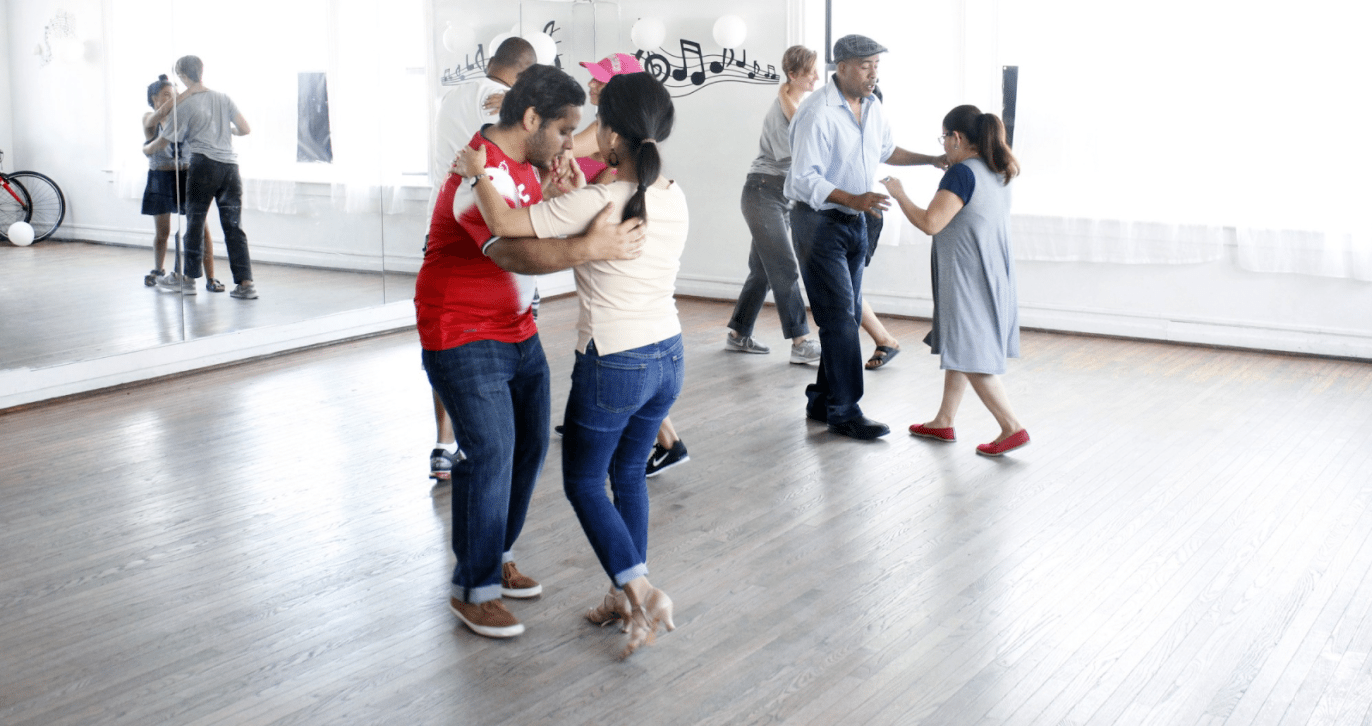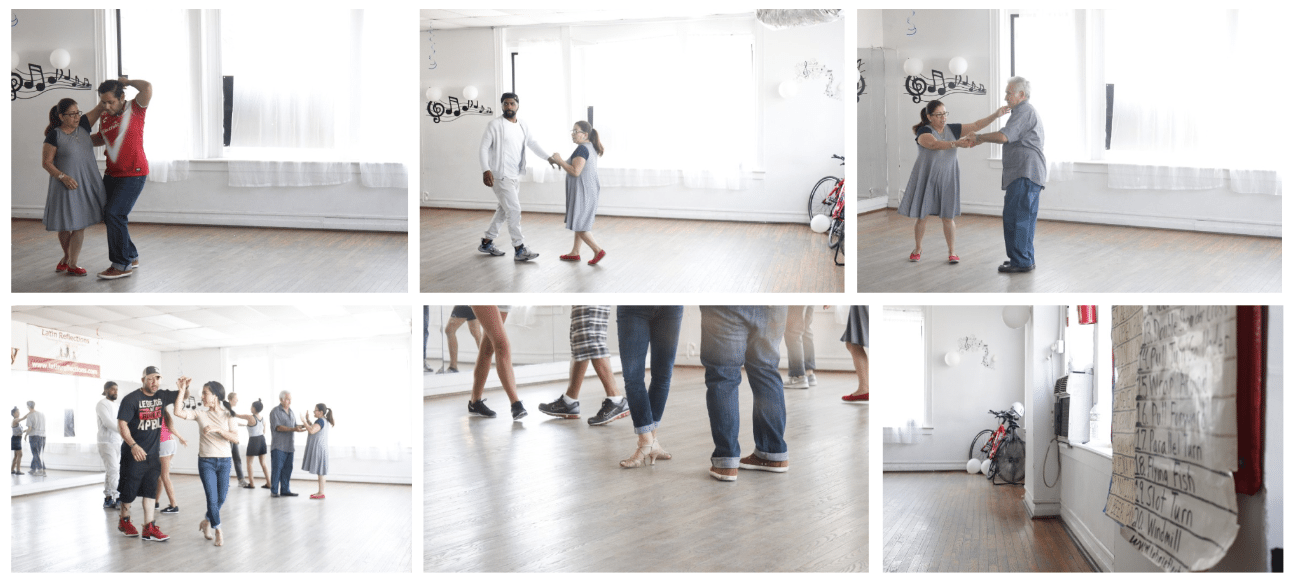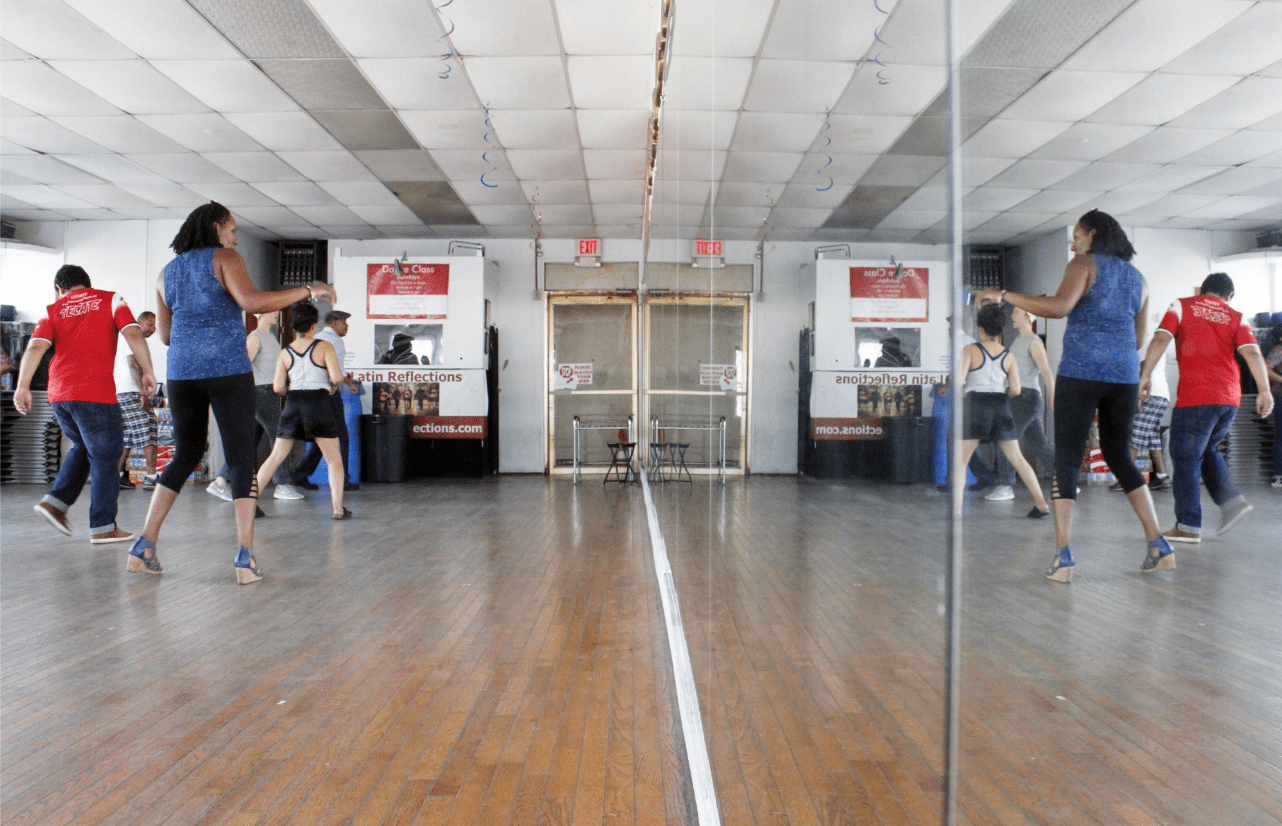Stepping into the First Salsa Studio in Brooklyn


By Shreya Vaidyanathan and Kat Moon
SUNSET PARK – New York Salsa has a rich cultural background, having been built and shaped by various immigrant communities in the city during the late 1960s and early 1970s.
The confluence of traditional dances like mambo, cha-cha and rumba along with popular trends of the time, and set to the Salsa music, makes NuYorican (New Yorkers of Puerto Rican descent) “Salsa Dura” – emphasizing fast tempos and instrumental solos style – a unique blend. Some dancers say it is also an important way for Puerto Ricans and other ethnic groups to remain connected to their roots.

Carlos Vasquez Wants to Keep Salsa Alive
The very first salsa dancing studio in Brooklyn, La Nueva Salsa De Hoy, was established in 1989 by Carlos Vasquez. It’s located at 504 46th Street in Sunset Park. We set out to the studio to meet Vasquez, now 63, and hear his story of falling in love with salsa and founding the studio that is now home to over 300 students at present.
Having run into Vasquez outside the studio while he was waiting for a parking space, we got an immediate sense of his enthusiasm as he began playing his favorite salsa tunes from his car stereo system.
Vasquez’s family is originally from Ponce, Puerto Rico, but he was born and raised in New York City. He learned salsa from his sister, but it was his friend David Melendez who gave Vasquez his first opportunity to be an instructor. Melendez had a studio in the Bronx called the Starlight Dance Studio, and on Sundays he let Vasquez use the venue to give lessons.
When Vasquez’s classes at Starlight became too crowded, he began to look for a space where he could start his own studio. One of Vasquez’s students recommended a location to him. “Let’s take this to Brooklyn, I have the perfect spot for you,’” Vasquez recalls her saying. “So I left the Bronx, and I came to Brooklyn, and that’s when it blew up.”
A Class at La Nueva Salsa de Hoy
As soon as you climb the stairs to the classroom on the second floor, you can hear music booming from the speakers. Vasquez says that the bass is what sets salsa apart from other genres of music. “The bass is the heart,” he explains, “As we say in Spanish, ‘la corazón’ de la salsa.”
Vasquez says that once he enters the classroom, the clock does not exist. If the class is supposed to finish at 10 p.m., but there’s “a strong spirit inside the class that’s making everybody go crazy, and move, and having fun,” then Vasquez says he will not end the class.
Each class is scheduled to be 2 hours long, and there are a range of beginner, intermediate, and advanced classes. On the weekdays classes take place in evenings after 6 p.m., whereas on the weekends there are classes from 10 a.m. to 5 p.m.

Vasquez’s Studio Draws in the Community
Within the Sunset Park neighborhood, La Nueva Salsa de Hoy is known as a gathering place. “A lot of times people come in, they want to do a private party, or they want to celebrate their daughter’s birthday,” Vasquez explains. He says he happily opens the door to his studio to host these events.
La Nueva Salsa de Hoy also prides itself in bringing people of different ethnicities together. Although the community in Sunset Park is predominantly Hispanic, students who attend the class range from Hispanics and Russians to Arabs and Filipinos.

The Legacy of La Nueva Salsa de Hoy
Every June, the school attends the National Puerto Rican Day parade on 5th Avenue in Manhattan. “We participate in everything,” Vasquez tells us. “If there’s an organization that needs our help in doing a dance routine, we will do it.”
During the class, we met students of his who have been there for just a few weeks to as long as a decade. The common thread connecting each of them was an appreciation for their instructor who inspires them to dance and makes every class more fun than the previous one says one of the new students.
“Carlos is an amazing human being and a very spontaneous salsa instructor,” said Jonathan Ramos, 28, “His advice and styling techniques make him the best at what he does.”

Vasquez has seen generations of people come through his doors to learn and drink in his love of dance and rhythm. Several of his students have also gone on to start their own studios: Latin Fever On2 Dance Studio and Salsa Salsa Dance Studio, which are both located in Brooklyn.
Vasquez says his philosophy is simple: “I teach these kids today, and if I’m not here for tomorrow, then let that child that has learned from me, take this into the next generation.”




